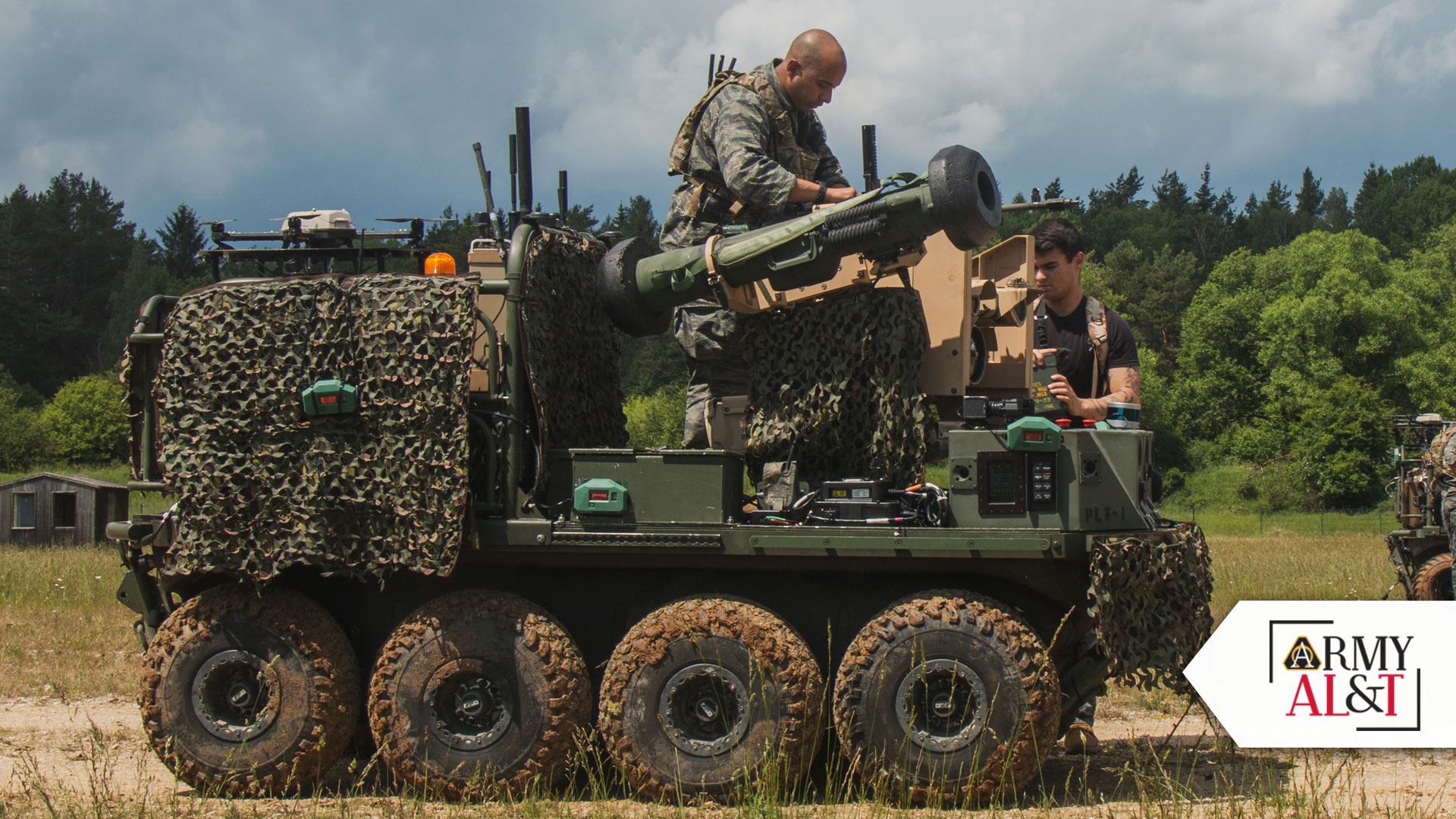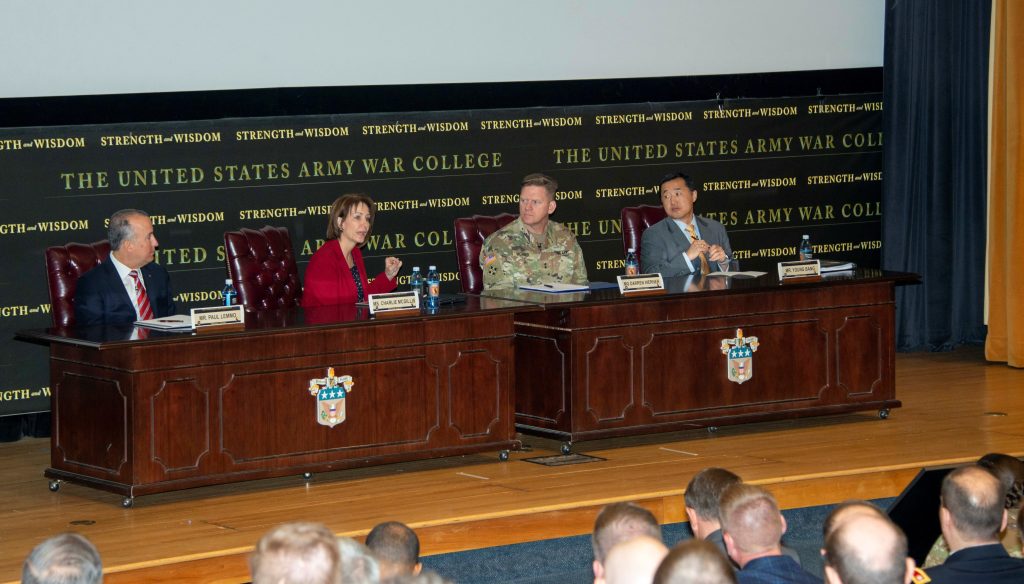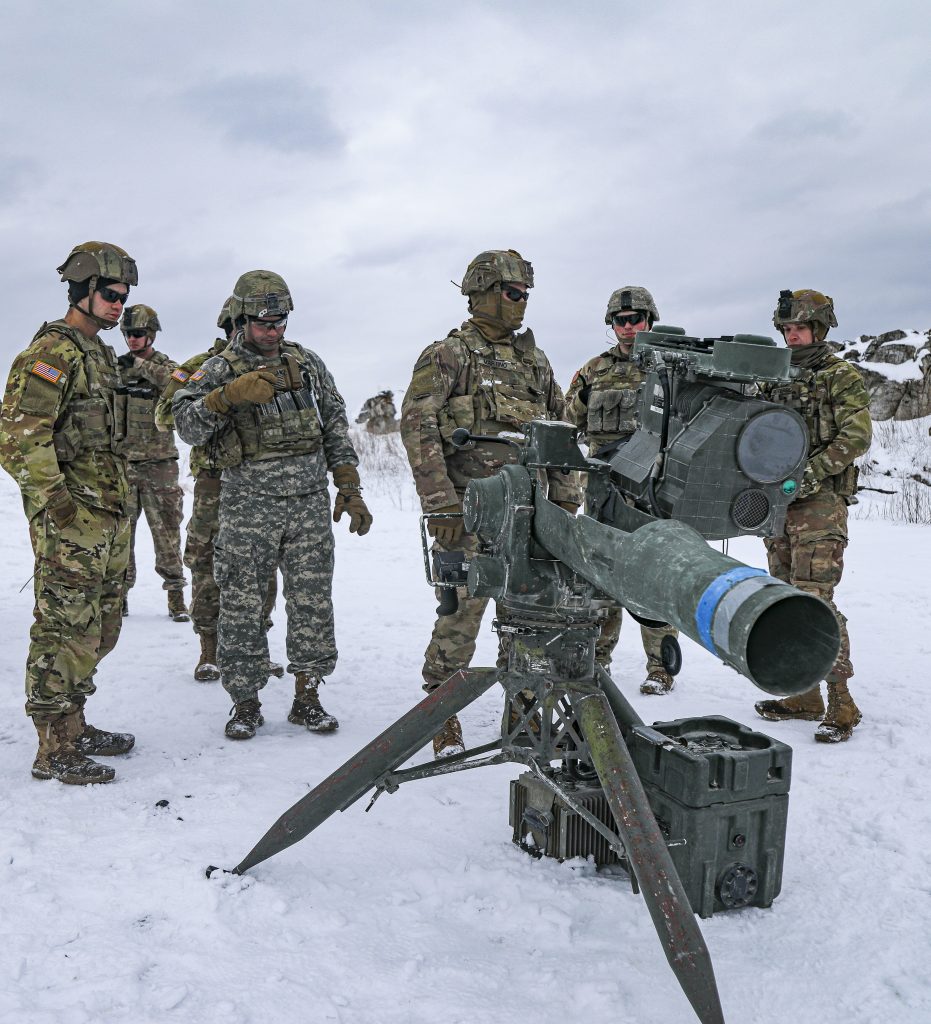
From the Army Acquisition Executive
Douglas R. Bush
The Army is improving and modernizing its software acquisition process to get Soldiers the technological advantages they need—fast.
As the Army moves toward an agile acquisition system in sync with the information age, one of my top priorities is to improve the Army’s policies and practices regarding the acquisition of software. Software is now central to almost every major program we have; and is often the most important element of our many programs. All of these “smart” systems, from Soldier-carried targeting systems to tanks and aircraft, need sophisticated software to process data to function. This will take on increased importance as we develop and field future systems, including unmanned and optionally manned ground and air vehicles.
Acquiring the right software is a top priority in the Army and throughout the Department of Defense. But established acquisition models, developed during the industrial era, have not kept pace with the development of software, which undergoes rapid and constant improvement and upgrades. With strong Congressional support, the Army has begun improving and modernizing its software acquisition processes.
Congress has given the Army more tools and authorities so it can acquire software in a fundamentally different way. We published our software acquisition policy last year to take advantage of the new software acquisition pathway. This pathway moves us away from the relatively linear waterfall approach to an integrated, agile and more modern approach to software—trying to take advantage of the way industry is developing software.

INDUSTRY INSIGHTS: CEOs engage with Army War College students, sharing their experiences and insights during industry day, held on March 29, 2022, at Carlisle Barracks, Pennsylvania. Pictured, from left, are Paul Lemmo, Charlie McGillis, Maj. Gen. Darren Werner, and Young Bang. (Photo by Robert Martin, U.S. Army War College Public Affairs)
Currently, six Army programs are using the new software acquisition pathway. We have a good variety of programs, ranging in size from an Acquisition Category (ACAT) I-D program (Army Integrated Air and Missile Defense) to smaller ACAT III-equivalent programs. In order for the software acquisition pathway to be successful, we have to ensure that all associated processes are being tailored to improve the speed and quality of software delivery. Four programs are already in the execution phase and planning software deliveries that meet the required annual delivery timeframes. We’re hoping to learn from these efforts.
In the area of budgeting for software, we have an opening from Congress in terms of how we adjust our approach, which is an area where we are far out of date. Under standard acquisition procedures, the Army separates research and development, procurement and sustainment funding for software and handles them as distinct categories. However, when it comes to software, the private sector often manages all these activities simultaneously. So, I plan to have an ongoing discussion with members of Congress to ensure they’re comfortable with how we’re proposing to use the authorities and to see if they can think differently about how we budget for software (e.g., Budget Activity 08)—which will be critically important.
This effort will take several years to implement. So, at present, I am bringing more talent on software into Army acquisition right at the top. Young Bang, my principal deputy, comes to the Army with extensive private sector software, data, artificial intelligence (AI) and cyber experience, and is my partner in these efforts. We have also brought on Jennifer Swanson as our new chief systems engineer, who also brings a wealth of Army experience and expertise in software, data and engineering.

STANDBY TO LAUNCH: Soldiers from different companies in the 1st Battalion, 87th Infantry Regiment, 1st Brigade Combat Team, 10th Mountain Division, wait on standby after assembling the Improved Target Acquisition System (ITAS) to fire a Tube-Launched, Optically Tracked, Wireless-Guided Missile on Range 48 at Fort Drum, N.Y., Mar. 2, 2022. (Photo by Spc. Pierre Osias, 27th Public Affairs Detachment)
It is important to have the right kind of people with knowledge about software who can do appropriate oversight, and run software development and sustainment programs. We have a lot of software talent within the Army. Our acquisition officers are among the most highly educated, but we need to leverage all the talent across the Army to get better software. There’s a people side to software development. There’s an authority side, and there’s a money side. We are working to develop software, data and AI correctly and with the right people, color of money, legally with the statutory authority across the Army, all while accelerating and innovating how we do it.
Of course, improving how the Army does software is a team effort. My team and I are collaborating closely with other elements of the Army, in particular the Army’s Chief Information Officer Raj Iyer, Ph.D.; Lt. Gen. John B. Morrison, Jr., deputy chief of staff, G-6; and Lt. Gen. Jim Richardson, acting commanding general at Army Futures Command, on this important work.
As we modernize the Army, everything we do is underpinned by the digital transformation. We are investing in the development of cloud computing technologies, improving data access and sharing environments, and streamlining software development. Development continues on future systems that will depend upon even higher levels of software and data use, including AI technology and machine learning.

ASSESSING RISKS, RECOMMENDING REFORMS: Lt. Gen. John B. Morrison, Jr. deputy chief of staff for G-6 highlighted Army risk management framework reforms during keynote remarks at the three-day Armed Forces Communications Electronics Association’s TechNet Cyber event at the Baltimore Convention Center on April 26. (Photo by Edward Loomis, Headquarters Department of the Army G-6)
Broadly speaking, we cannot separate data and software or data and AI. We must be deliberate about software. We have to think about data before developing software or creating algorithms and AI.
In the end, we must harness the vast amount of data at our disposal to get the right information faster to commanders at echelon to give them an edge in decision-making, so our Soldiers have a competitive advantage in future conflicts. What matters most is getting equipment and secure, trusted information in the hands of our Soldiers. Army’s research and development and acquisition professionals, working with America’s creative and innovative entrepreneurs and industry, will ensure that our Soldiers are supported by the software and smart technology that will give them an overwhelming, decisive advantage in future conflicts.







